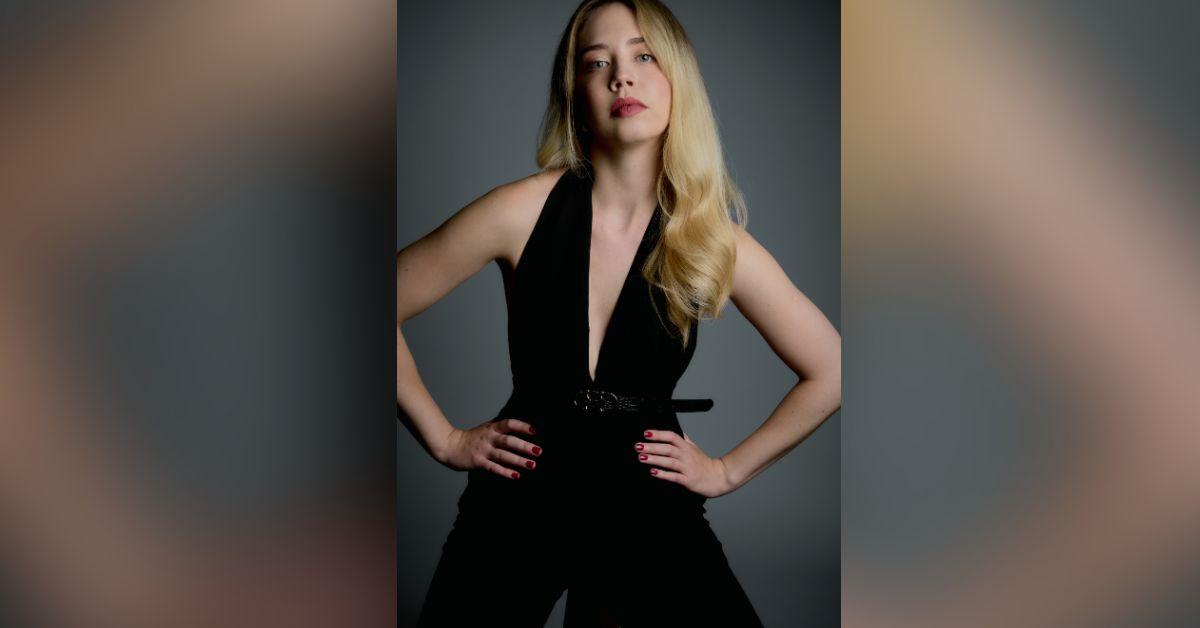 NEWS
NEWSKhrystyna Komarovska: 'Attention is the new currency, and it must be managed'

Natalie Kogan
Oct. 7 2025, Published 1:55 a.m. ET
Khrystyna Komarovska is a creative content creator, director, and digital strategist whose projects have captivated millions of viewers and attracted the attention of publications like The Times and Wall Street Journal. In an exclusive interview with OK! Magazine, Kristina discussed her journey in digital, the principles of creating viral content, and how to conquer the premium segment without sacrificing creativity.
— Khrystyna, your career path seems very interesting. What brought you into digital, and what inspires you the most in this field?
— Digital has never been just marketing for me. It is a tool that connects creativity and influence. I always say: attention is the new currency. It all started with short videos and bold ideas that unexpectedly went viral. This gave me the confidence that I can use the language of cinema and storytelling on social media to create projects that change the perception of brands.
— What do you consider to be the main principle of a successful digital strategy in the modern world?
— Strategy is the ability to engage in dialogue with the audience. The classic principle of 'seven touchpoints' works, but today it's not enough: the first seconds must grab attention. I use unexpected visual and textual hooks that make a person pause. A strong strategy is built on a combination of structure and an element of surprise — this is what holds attention in an era when it is more dispersed than ever.
— Your digital strategy for Line of Sight has become a real breakthrough. Tell us how you managed to create viral content for such a seemingly niche industry as optometrist?
— The digital strategy for Line of Sight has proven that even an optometry clinic can create viral videos. Our Reels garnered millions of views and attracted the attention of not only patients but also celebrities who then wanted to become clients themselves. This brought trust from both stars and a wide audience. If social media is used correctly, even a niche medical service can transform into a recognizable brand and take its place among industry leaders, as confirmed by the company's entry into Inc.5000.
— How do you approach working with premium brands? What are the characteristics of content for the luxury segment?
— In the premium segment, the key is not to showcase the product, but to create an aura around it. Luxury is about the atmosphere that makes a person feel like part of an exclusive world. Therefore, I build content not on trends, but on emotions and aesthetics. Everything should be minimalist and precise, like a frame from a movie: every element contributes to the overall impression.
— You often talk about visual storytelling. What is the secret to creating a story that captivates the viewer's attention in the digital space?
— My formula is simple: the more complex the idea, the simpler the presentation should be. People want to experience emotions, not dissect constructs. That’s why I gather clips from small details — a gesture, a glance, light, a word — that come together to create a complete story. It works because the viewer feels not the advertisement, but the emotion that stays with them.
— Viral content is the dream of any digital strategist. Share the secrets of creating it. What should be taken into account for the content to 'go viral'?
— Viral content is born at the intersection of emotion and relevance. I often take topics that touch people and talk not about the product, but about the issue that concerns them. This elicits a reaction and fosters engagement. Such content doesn't just accumulate millions of views; it attracts exactly those people who need the brand.

Natalie Kogan
Want OK! each day? Sign up here!
— How do you find the balance between a creative approach and the need to achieve specific metrics?
—I perceive metrics as a compass. Creativity sets the direction, while data helps to understand whether to amplify it or adjust it. For example, I always test new ideas several times before saying they don't work. This makes creativity more precise and helps it resonate with the audience.
— How do you see the future of social media and the role of digital strategists in that future?
— I am sure that the future lies in personalization and AI tools that will tailor content to each user. However, the essence will remain the same: attention and emotions. Algorithms will change, formats will accelerate, but the unique idea will always be at the center. Those who can combine technology and creativity will set the rules of the game.
— Your project Nina’s Files is, as I understand, an important stage in your career. Tell me more about it.
— Nina’s Files became a step for me from digital to cinema. It's a mini-series consisting of four episodes, filmed with no budget but with a grand idea. I combined the roles of director, actress, and producer — and it was a challenge. The project is now in post-production, and I plan to promote it through social media. For me, this is proof that big stories can be launched from scratch if there is an idea and a strategy.
— How do you work with the team? What approach do you use to achieve maximum efficiency?
— I believe that a team works effectively only when everyone has a shared vision. In my case, this is especially important: I was combining several roles in one project. I try to explain the idea in such a way that everyone can see the end result. Then the operator, the actors, and the designers work not in parallel, but synchronously. The vision turns the process into a single flow.
— What tools and platforms do you consider necessary for the work of a digital strategist? What can you simply not do without today?
— Of course, Instagram and TikTok are platforms where the main audience attention is formed. But my main tool is idea notes. Everything starts there. Another must-have is to be sensitive to changes: to track trends, events, and cultural shifts. These often become the starting point for strong concepts.
— How do you cope with failures? How do you analyze mistakes and use them for further growth?
— Failures are data. I always test new ideas at least three times to understand whether it's a coincidence or a pattern. If the format doesn't work, I change the strategy. If it works, I develop it. This is a calm and systematic approach that allows me to turn mistakes into a tool for growth.
— Your projects have been highlighted by major media more than once. What do you think has helped your work gain such recognition?
— For me, publications in The New York Times, Wall Street Journal, Good Morning America, and NBC News are not a goal, but a pleasant result. I have never done projects for the media; I have done them from the heart, and then they ended up in major publications. This gives confidence and confirms the significance of my work, but the real value is in the creation process.
— What advice would you give to beginner digital strategists and creative creators?
— Start with your personal brand. It shapes your vision and voice. Be consistent, find your niche, experiment. Don't be afraid of mistakes and keep trying. Today, everyone has a chance to build a career if they combine persistence and creativity.
—And finally, how do you see the role of a digital strategist in the future?
— The digital strategist of the future is not just a promotion specialist. He is a creative architect who connects ideas, technology, and culture. The world is accelerating, attention is becoming the most valuable resource, and those who can manage it will influence not only brands but also cultural processes.

